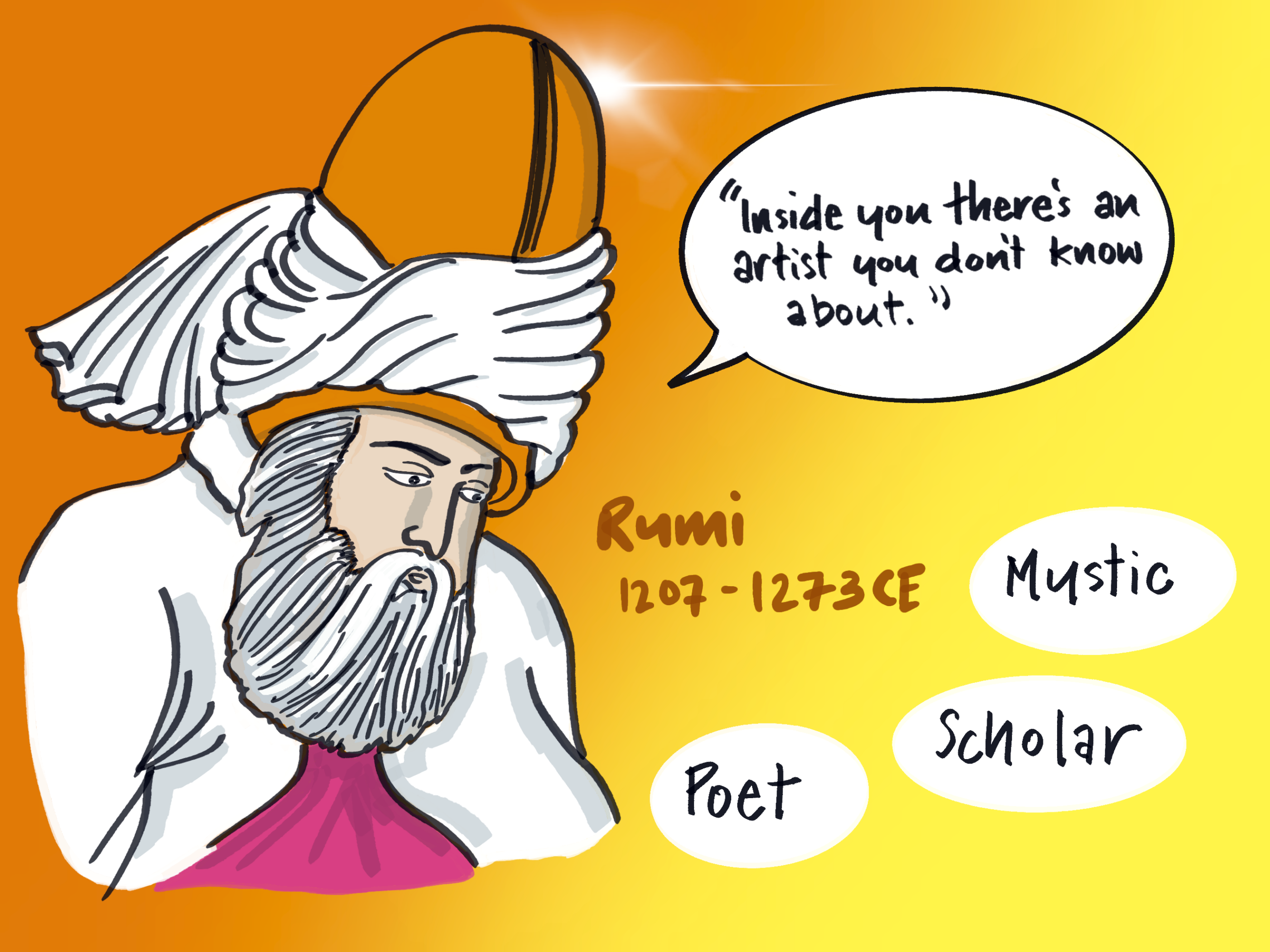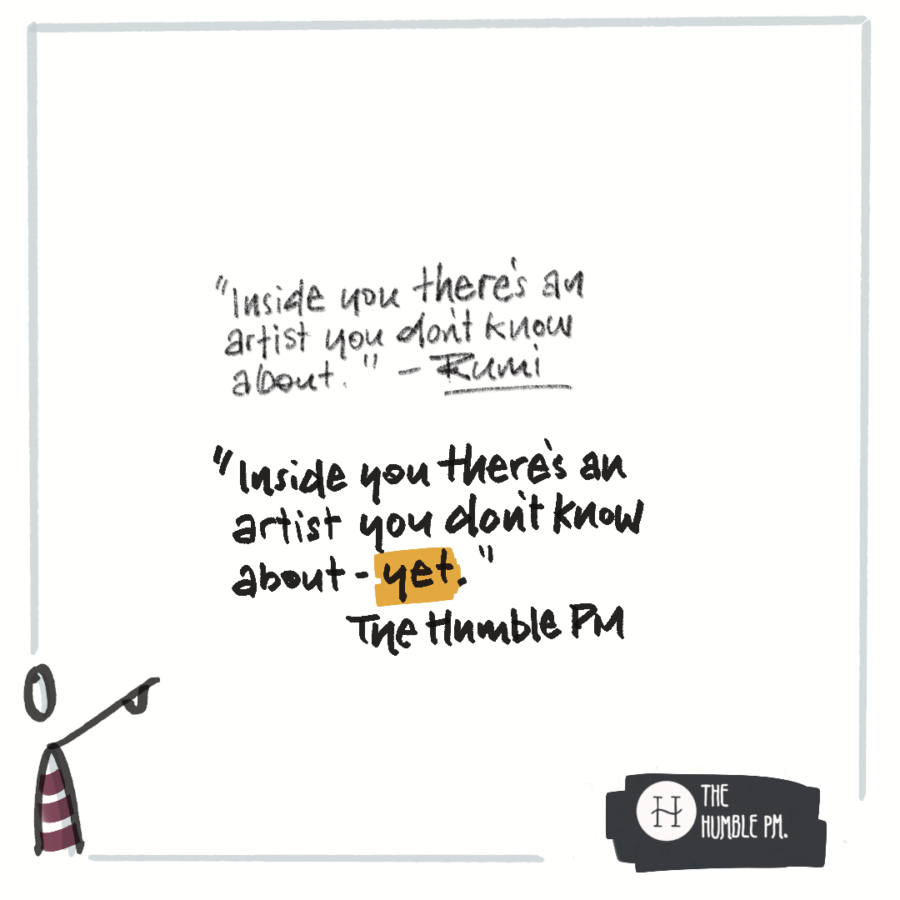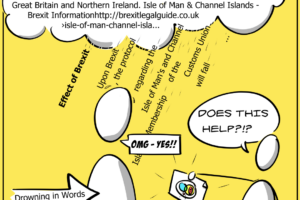The Answer you SEEK is Within YOU.
It is a common misconception that creativity is a rare talent that few possess. The truth (as Rumi so eloquently put it) is that there is a creative force inside every human being. Yes, that includes YOU!
At the start of every bikablo course, participants say, “I can’t draw” or “I’m not very creative.” After the training, people see their work and tell them, “I never knew you were an artist!”
Upon receiving this feedback, they reach out to me and say, “It’s incredible; I feel amazing.” They feel different, and the people around them see them differently after just two days. Amazing, right?!?
So What Happened?
Whether you believe me or not, that is entirely your choice. Hopefully, we can all agree on this: once upon a time, we were all children. And as children, we used to draw; we didn’t care what people thought. Then something happened.
Most of us cannot remember this point in time; some can. It may have been someone being intentionally unkind who laughed at our picture. Alternatively, it was an innocent yet unhelpful comment. So, we stopped drawing and took on the belief “I cannot draw.”
We still believe we cannot draw ten, twenty, thirty, or more years later.
It’s pretty sad, as we deny ourselves access to a potential continuous fountain of joy and fulfilment.
The Enemy Within
Almost everyone has an inner critic—a voice inside our head. That commentator frequently tells us what we can and can’t do, critiquing our work, how we should feel, etc. For some, its stronger and more unkind than others.
We don’t stop to ask, “Who the freak is inside my head, being unhelpful and generally unkind to me?“
WHO?!?
The Imposter
That voice is an imposter, camped out for so long in our noggins that we no longer question the source of the voice nor what it is saying.
How it Affects Us
It can shut us down and make us feel lonely, unworthy, and unloved. Halting us from doing “new” things, like making new friends, joining a club, surfing, running (insert whatever sport or hobby here) and drawing. Therefore, it is the first and biggest hurdle for us to tackle.
1. Tame Your Inner Critic
As you start your new adventure, take note of the conversation inside your head when you pick up a pencil and begin to draw something. You may hear an unkind voice saying, “See, you don’t even know what to draw!” “That looks rubbish.” “Mate, if that’s supposed to be a camel, you’re all good; however, if that’s a dog, you may as well quit now.” And so on.
Just close your eyes and breathe, ignore that unhelpful voice and permit yourself to make some marks on the paper with the pencil. Try and be like a child again, to draw something and not worry about what it looks like, dare I say it, to play.
NOTE: At this point, if you have a voice inside your head or you are thinking, “Mate, I’m a grown adult; I don’t play!” May I counter with this question? “WHY NOT?”
Another unhelpful belief is that once we reach adulthood, we no longer play. Not this type of play:
- play
- take part in (a sport): “I play squash and badminton.”
This one:
- play
- Engage in activity for enjoyment and recreation rather than a serious or practical purpose: “The children were playing by a pool.”
I say, “Play, my friend, play at making marks!“
2. Find a “Playmate”
Reach out to someone who you can play with. A friend? Work colleague? If you have children, draw with them. Learn from them. They will love drawing with you.
A word of caution: Remember, you may have stopped drawing because someone was unkind or innocently unhelpful. Don’t be that person! A vast difference exists between being critical and providing productive, helpful feedback.
Another word of caution: Your best friend may be your best friend. However, that doesn’t automatically make them the best person to help you on your journey to find your inner creativity.
You are about to start nurturing your inner creative child and need the proper support.
If you can’t think of anyone, why not book a free drawing session with me? I may be in my fifties, but I love to play.

3. Practise Mindfulness
Being mindful doesn’t mean sitting in a cave, meditating and hiding away from the world. It’s about raising our consciousness and our awareness as we go about our daily lives.
Let’s go back to the dictionary for this one.
- mind·ful·ness
- the quality or state of being conscious or aware of something: “their mindfulness of the wider cinematic tradition.”
- a mental state achieved by focusing one’s awareness on the present moment while calmly acknowledging and accepting one’s feelings, thoughts, and bodily sensations, used as a therapeutic technique.
When our minds wander, we either live in the future or the past. The most delicious moment of every day is right now, no right now, I mean now, you get the idea. We need to live in the moment to find ourselves and true happiness. Drawing helps us be more present. It helps us to slow down.
4. Make Time for Creativity
It is too easy to say, “I don’t have time for creativity.” Nonsense! You have precisely the same amount of time every day as anyone else. You are simply choosing to spend it elsewhere. Okay. Admittedly, I don’t have children, so that gives me more free time than a fair few people on this planet. 😊
However, creativity doesn’t have to occur in marathon sessions. You can be creative in 5-30 minutes every day. One of my favourite things is grabbing my morning coffee, sitting down and drawing.
What activities are you currently spending time on that you could reduce or replace with something creative? Social Media, News, Internet, TV, The Pub?
Book yourself some creative spots and play in them.
5. Start a Journal
Journalling helps you with all of the above. Simply by observing, we change the world around us. Even those sneaky little atoms behave differently when we observe them. That’s getting into Quantum Physics and, well and truly, off-topic.
Aim to write in your journal daily, but if you miss a day or two, that’s okay; be kind to yourself. – you don’t have to come up with mind-bending creative topics. You can use your journal to reflect and document some of your observations. Where do I spend time? What could I change? Did I get outside today? When do I feel most awake/most creative? Did I connect with nature? How am I feeling? What did I enjoy today? How has my mood changed? Did I play today? What thoughts am I having? Did I draw today? What inspired me today?
Why Creativity?
Creativity is not about producing works of art. It can also help in problem-solving, critical thinking, and innovation. So, do yourself a favour and unleash your inner creative child.
Citations
Richards, R. (2007). Everyday creativity: Our hidden potential. In R. Richards (Ed.), Everyday creativity and new views of human nature: Psychological, social, and spiritual perspectives (pp. 25–53). American Psychological Association. https://doi.org/10.1037/11595-001
Special Thanks: The drawing of Rumi was created after following the bikablo® Online Procreate Training – Poster Design with Procreate – Video Training developed by the incredible team at bikablo H.Q. – Cologne. Thank you, Stefan and Tobi!
If you would like to see which video training or digital products are offered by bikablo HQ, please visit: bikablo App EN – Bikablo
Do you wish you could draw it but don’t, as you think you are “rubbish at drawing”? We can teach you how in just two days; please take a look at our bikablo training course offerings.
The Humble PM – A space for introspection, growth, visualisation and learning, a place where we can be vulnerable, share stories, and talk openly about the truth so that you can create better environments for your people.



